GROSTENQUIN, France — Before C-130 pilots can even fathom the idea of touching down in an austere environment, the ground must be tested. Prior to this, the landing zone must be secure and cleared of any hostile intent.
From Jan. 14-17, Defenders put their knowledge to the test with some help from the 1st Combat Communications Squadron with their coinciding exercises, Frozen Defender and Heavy Rain.
Defenders Pave the Way
A Defender without a field training exercise is like a sword without a grindstone; the blade dulls and becomes ineffective. Frozen Defender served to sharpen the security forces Airmen’s responsiveness.
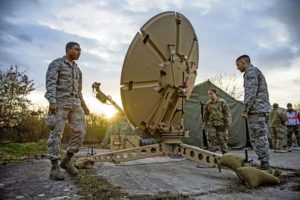
“Frozen Defender is our annual validation event,” said U.S. Air Force Capt. Michael Thrasher, 435th Security Forces Squadron director of operations and Frozen Defender lead planner. “For anything we’ve scheduled in our annual training plan, we have to come here and validate our ability to execute it. We also come to places like Grostenquin, France, so we can ensure we are able to complete our primary mission: open airfields.”
These Defenders — whose parents walked to school, uphill, in freezing weather — finally have a comeback: “Have you rucked in that climate with 80+ pounds on your back?”
“We try to work in different environments, mainly harsh ones, because there’s a look toward arctic operations,” Thrasher added. “We’re trying to make sure we are ready if we’re asked to go. Secondly, we want to make sure we can execute our mission any day, anytime, anywhere. Being able to work in rain, snow, sleet or hail makes the sunny days in the summer even easier.”
Exercise planners injected a myriad of scenarios to prove the unit’s capabilities. It began at the gate of an old decommissioned air base from World War II. Overgrown foliage was the only sign of life, covering dilapidated buildings with rusted doors and shattered windows. When troops stepped off the bus, the exercise commenced.
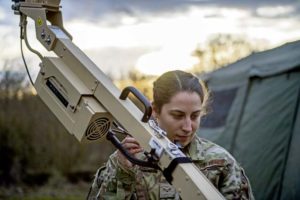
“As soon as they landed, we took all of their vehicles and extra equipment, gave them the bare-bone essentials, then said, ‘dismount to your objective rally point,’” Thrasher said.
Approximately 40 Defenders threw their bags on their shoulders and traversed the grounds in formation to their bed-down area, while providing security along the way to ensure a safe arrival.
From that point, the Airmen confirmed the location for operations, seized the airfield, and slowly made their way to the main operating base with all their equipment. As the Defenders swept the airfield, they were confronted with opposition forces.
“Opposition forces are the simulated enemy while we’re out here,” Thrasher said. “We try to make sure we have subject matter experts as OPFOR. We were able to task the 86th Security Forces Squadron from Ramstein; some really high-speed cops were able to come out here to test us to make sure we’re doing things the right way.”
To enhance the realism of the exercise, the 435th SFS and OPFOR used blank rounds. The sounds of which reverberated across the airfield. Some of these blank rounds found their way into friendly territory. Simulated “friendly” casualties tested the Defenders’ abilities to respond quickly and neutralize threats. They used portable litters to carry ‘downed Airmen’ and performed self-aid and buddy care as needed. One Defender even had to apply a tourniquet to his leg in the contested area.
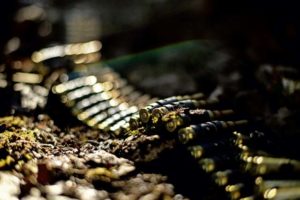
“One thing we really pride ourselves on is we’re always willing to push the limits and think outside the box,” Thrasher said. “We use the resources we’re given to come out to an austere environment and test ourselves against some harsh adversaries to sharpen our skills more and more every day.”
With the Defenders sharp and at the ready, the rest of the 435th Contingency Response Group can focus on their primary mission knowing they’re in safe hands.
“The main objective is to solidify ourselves within the CRG to make sure we are worldwide deployable within the 72-hour timeframe it takes to open a base and assess an airfield so aircraft can land in any environment,” said Staff Sgt. Christopher Baca, 435th SFS Ground Combat Readiness Training Center instructor and Frozen Defender mission planner.
Opening airfields anywhere in the European area of responsibility is the 435th CRG’s bread and butter. It allows for a strategic advantage by giving the U.S. Air Force the ability to perform air operations no matter the climate or location. Whether it’s U.S. sister services, NATO allies, or partners, this allows Airmen to directly support troops on the ground. This capability could not be possible, however, without the security forces component of the 435th CRG.
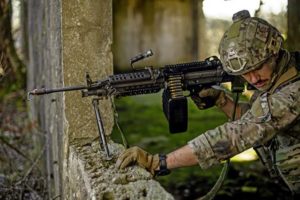
“It’s important for us, as security forces members and being part of the CRG, to do these exercises to validate that we are able to do these things in a real-world situation,” Baca said.
Combat Communications Rain Down Electronic Warfare
While Defenders performed operations in the field, the 1st CBCS was nearby providing an added obstacle as part of their coinciding exercise, Heavy Rain.
“We’re helping with Frozen Defender by coordinating with the missions they want to accomplish,” said Staff Sgt. Matthew Oravec, 1st CBCS cyber defense technician. “There are certain times they want to try to operate in a contested communications environment. We’re working as an intermediary for them during the scenarios they want training for, and we provide the interference.”
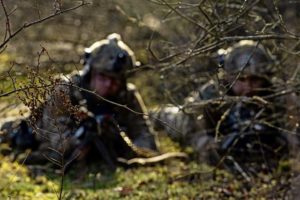
Blocking the Defenders’ ability to communicate is an atypical tactic, but one that is important to be ready for.
“Because of advances in technology of our adversaries, we need to consider we might be a target of something like that too,” Oravec said. “Recently, it has become a real threat for ground communications in the kind of missions we support.”
Exercise Heavy Rain allows the combat communications technicians to practice detecting and combating spectrum interference.
“Spectrum interference is when your signal becomes degraded because someone else is transmitting on that same frequency at a higher power,” said Master Sgt. Britton Hanson, 1st CBCS flexible communications package flight chief and Heavy Rain team lead. “By being able to identify that, if we deploy in support of a real-world mission and that happens, it’ll allow us to get our computer network back online faster, which then can result in the proper people thwarting the interference altogether.”
Understanding how to detect interference is crucial to mission effectiveness, Oravec said. Adversaries can both block means of communication, and leak false information into their communication channels.
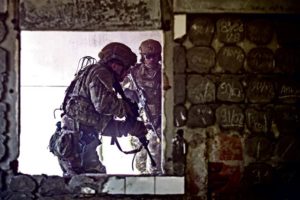
“This exercise is important because no one in tactical communications deals with electronic warfare on a regular basis,” Oravec added. “This is going to set groundwork for all the different units that deal with tactical communications to detect and counter when they’re being interfered.”
Frozen Defender and Heavy Rain allowed Defenders and Combat Communications Airmen to discuss ways to improve future exercises and strengthen the joint effort.
“Hopefully in the future, we can incorporate the rest of the CRG,” Thrasher said. “We really want to make sure if communications go out, we can combat things like interference with some of our brothers that we don’t always work with, and then re-integrate properly to make sure we can complete the mission.”


